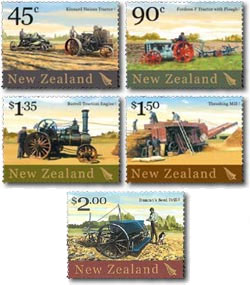Britain's farmland birds have suffered alarming declines over the last twenty-five years. It would appear that their decrease in numbers coincides with a period of rapid intensification in farming in the mid-1970s, and they have continued to steadily drop in numbers ever since.
There is thought to be six main reasons for the decline in farmland bird numbers:
1) Loss of wild food-plants as a result of herbicide use
2) Change from spring-sown to autumn-sown cereals and the subsequent loss of winter stubble.
3) Insecticide use reducing invertebrate populations.
4) Conversion of pasture to arable land and the resultant decline in soil invertebrate numbers.
5) Land drainage making soil dwelling invertebrates less accessible.
6) Availability of nest sites due to removal of hedgerows
All of these factors are a result of agricultural intensification, and they have affected different species to varying degrees.
The Tree Sparrow (Passer montanus) is the species that has experienced the most dramatic decline in numbers, over a 95% reduction in abundance. The main cause of this decline is the reduction of seed-supply through destruction of food-plants, usually as a consequence of herbicide use. Along with the loss of winter stubble, it means that food supplies are scarce all year-round which has resulted in a probable increase in the mortality of full-grown birds. Those adult birds that do survive harsh winters on reduced food supply then had difficulties locating suitable nest sites, as the hedgerows they had relied on have been lost.
Another once common farmland bird that has hit hard times is the Grey Partridge (Perdix perdix). This species has been badly affected by the use of herbicides and its subsequent reduction of food-plants. The loss of vital insect supplies by insecticides has resulted in an inadequate rate of chick survival. The lack of suitable nest sites has also resulted in increased predation by corvids and mammals on the eggs and chicks.
The Lapwing (Vanellus vanellus) has also suffered. A combination of insufficient chick survival and loss of nesting habitats has resulted in a 40% drop in numbers since 1970. A switch from spring-sown crops to autumn-sown crops causes grass and crops to be too mature and dense to provide suitable nesting sites. Land drainage has affected their food supply by drying out the topsoil and making invertebrates less accessible, and earlier harvests mean that lapwing nests are often destroyed by heavy machinery.
The Corn Bunting (Miliaria calandra) has declined by 85% because of a severe reduction in areas of barley now sown, a crop which is a favoured site for nesting. The adult birds have also suffered losses because of the loss of winter stubble fields and the use of herbicides. It is thought that adult mortality in the winter months is the main cause for a decline in numbers.
Many other once familiar birds have also suffered recent declines; Linnets by 54%, Yellowhammers by 54%, Turtle Dove by 70% and Skylark by 52%.
By Steve Portugal
In: Birds of Britain
http://www.birdsofbritain.co.uk/features/birds-farming-jun-02.asp

- Login om te reageren
